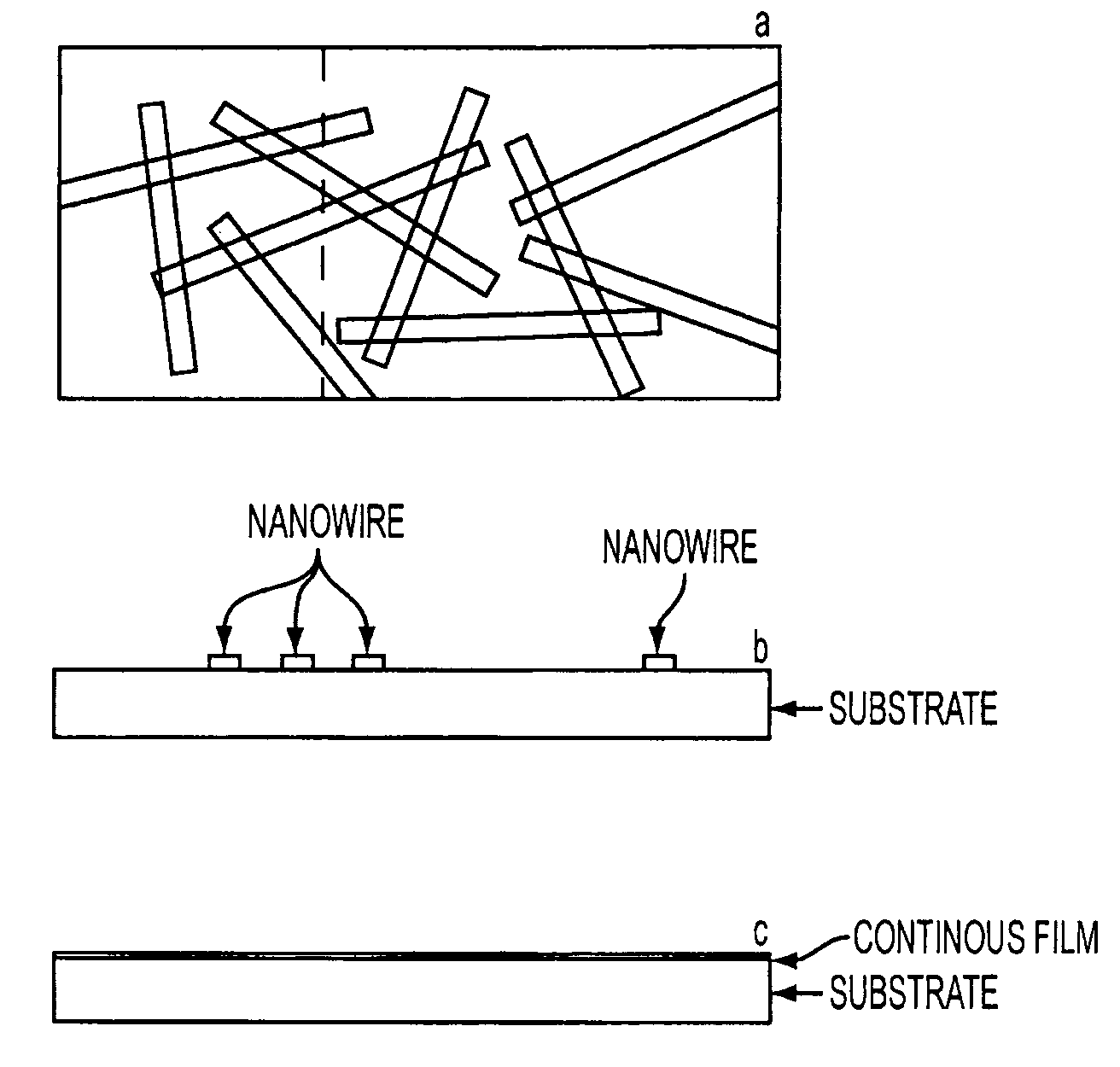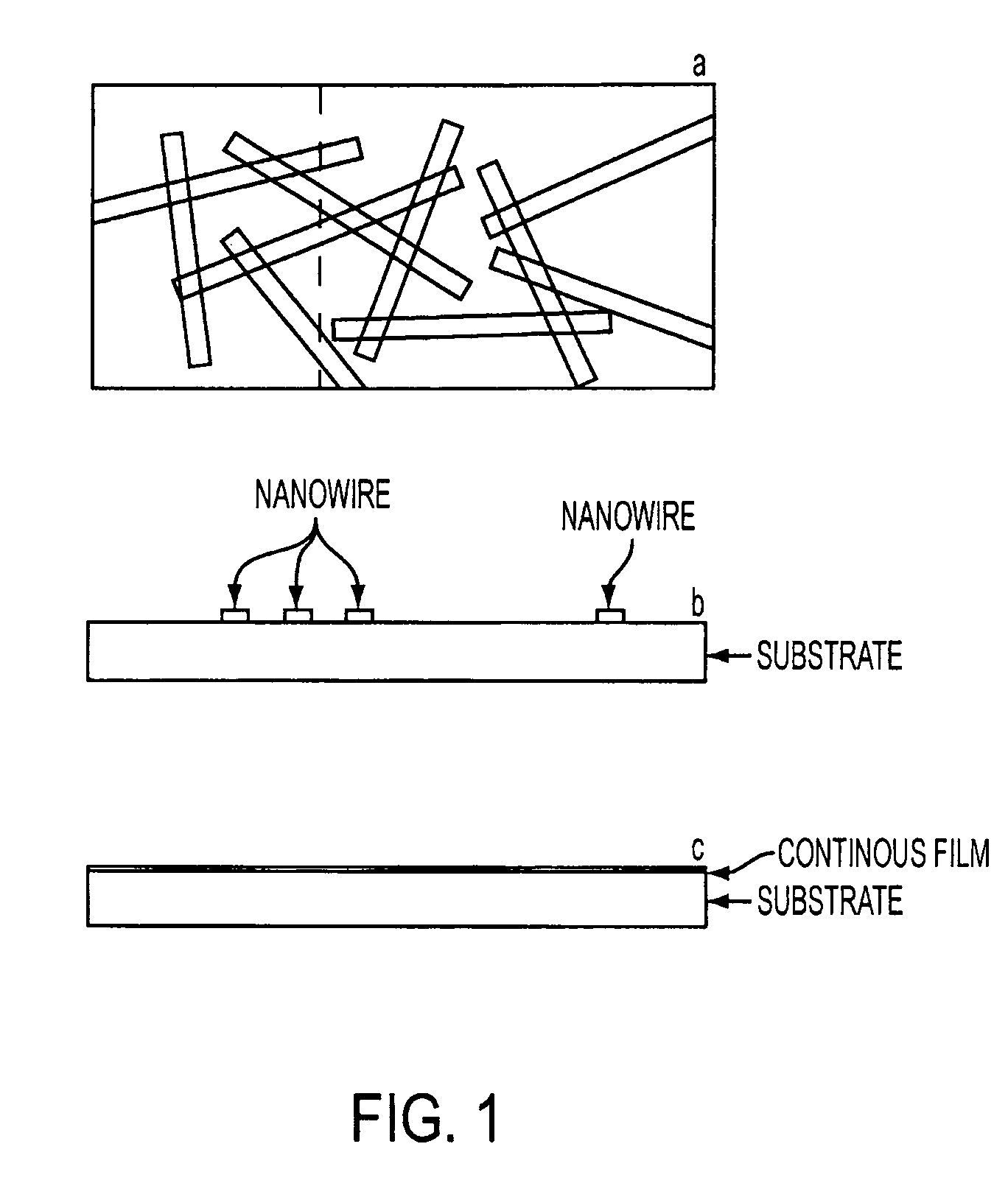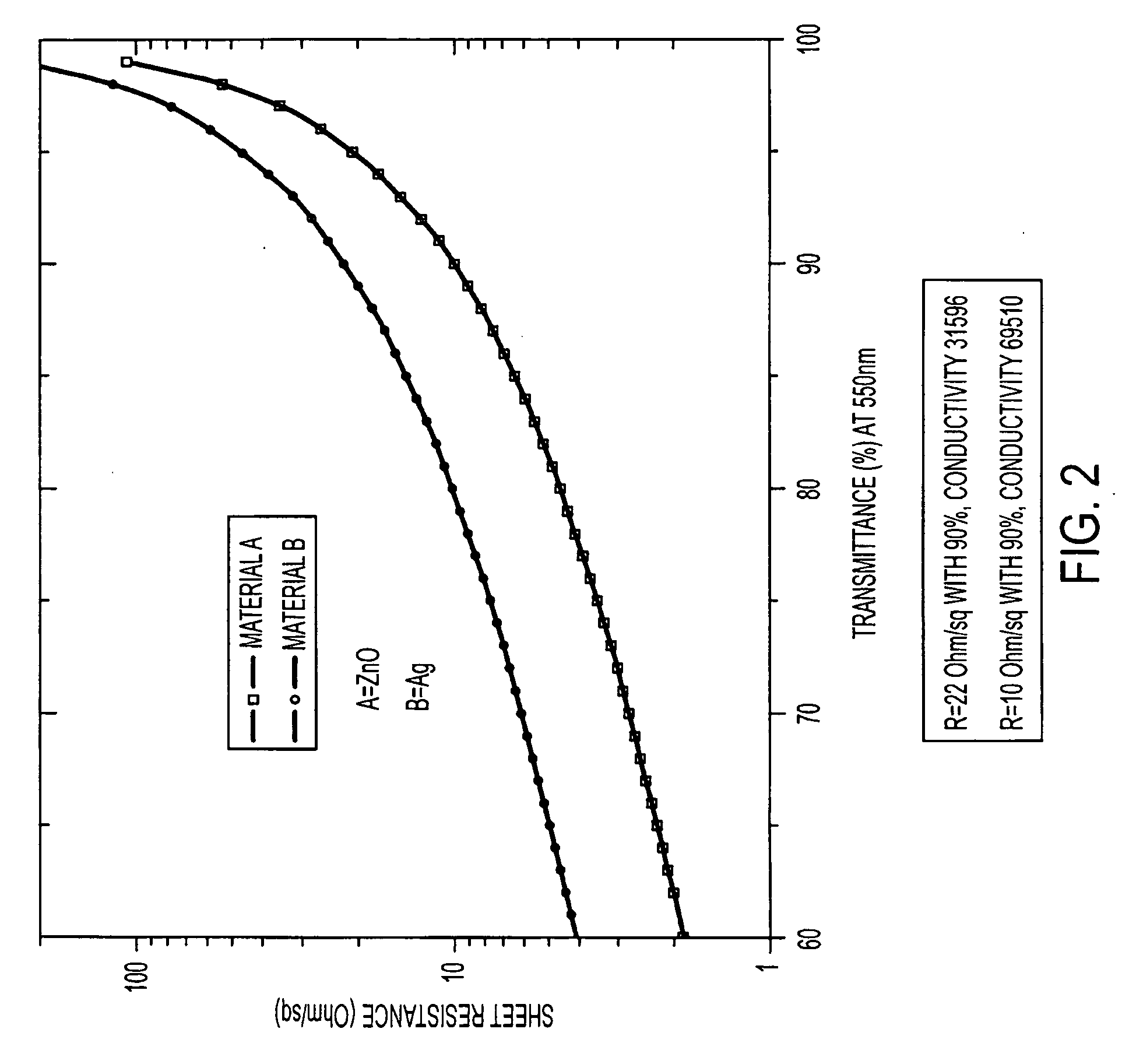Electrically conducting and optically transparent nanowire networks
a technology of optical transparency and nanowires, applied in the field of electric conducting and optically transparent nanowire networks, can solve the problems of brittleness of materials, limited use in certain applications, and inability to meet some (like polymeric) substrates
- Summary
- Abstract
- Description
- Claims
- Application Information
AI Technical Summary
Problems solved by technology
Method used
Image
Examples
Embodiment Construction
[0032]In describing embodiments of the present invention illustrated in the drawings, specific terminology is employed for the sake of clarity. However, the invention is not intended to be limited to the specific terminology so selected. It is to be understood that each specific element includes all technical equivalents which operate in a similar manner to accomplish a similar purpose.
[0033]Some embodiments of the current invention are directed to a random network of transparent oxide and / or metal nanowires. An example of transparent oxide nanowires according to some embodiments of the current invention include, but are not limited to, doped ZnO. An example of metal nanowires according to some embodiments of the current invention includes, but is not limited to, silver (Ag) nanowires. A random network, while retaining the high conductivity and optical transparency also has mechanical flexibility. In addition, the one dimensional nature of the nanowires leads to increased optical tr...
PUM
| Property | Measurement | Unit |
|---|---|---|
| aspect ratio | aaaaa | aaaaa |
| optical transparency | aaaaa | aaaaa |
| thickness | aaaaa | aaaaa |
Abstract
Description
Claims
Application Information
 Login to View More
Login to View More - R&D
- Intellectual Property
- Life Sciences
- Materials
- Tech Scout
- Unparalleled Data Quality
- Higher Quality Content
- 60% Fewer Hallucinations
Browse by: Latest US Patents, China's latest patents, Technical Efficacy Thesaurus, Application Domain, Technology Topic, Popular Technical Reports.
© 2025 PatSnap. All rights reserved.Legal|Privacy policy|Modern Slavery Act Transparency Statement|Sitemap|About US| Contact US: help@patsnap.com



